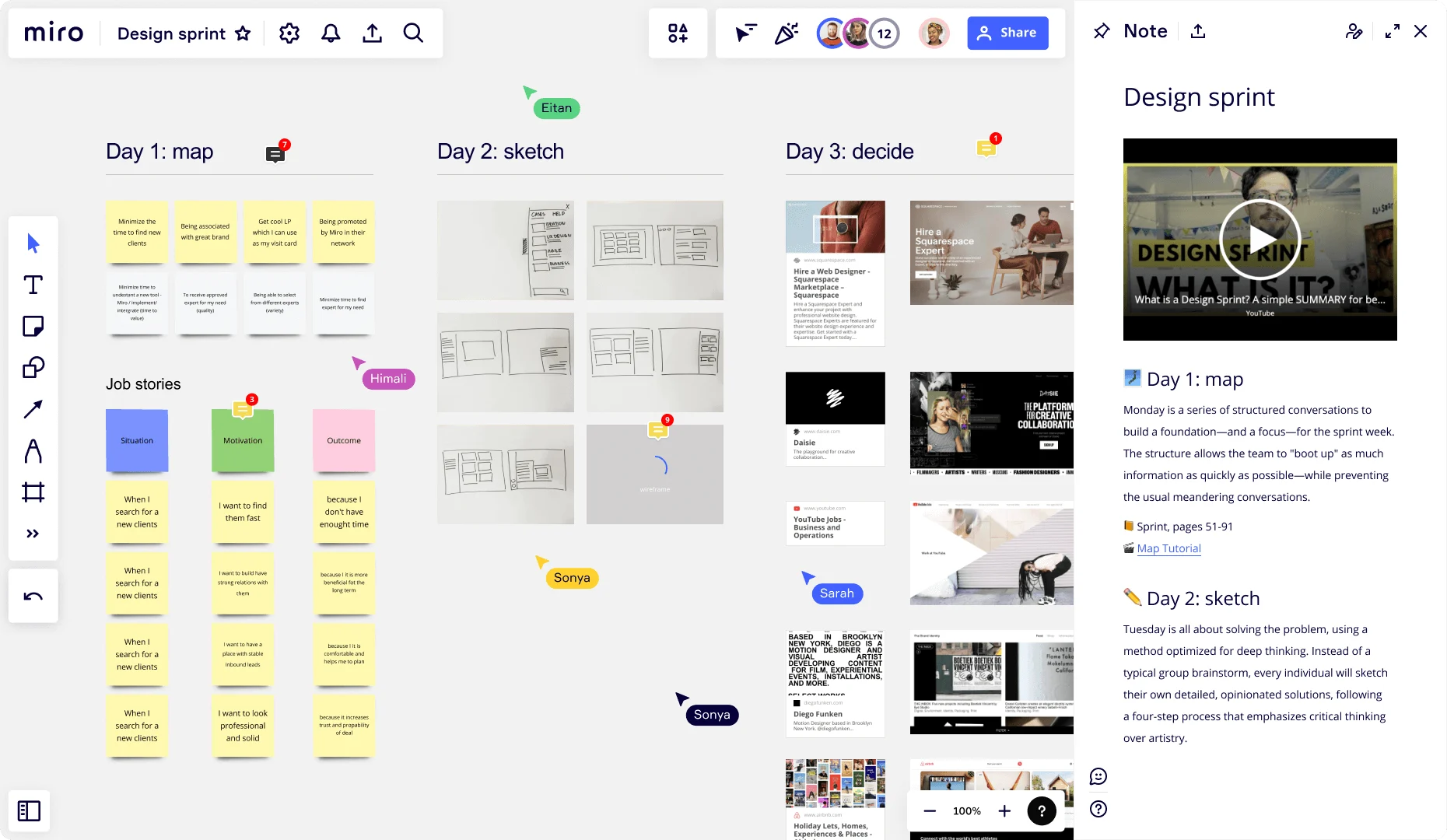
What is a design sprint?

What is a Design Sprint: What you need to know
Let's start with the basics. A design sprint is an intensive, structured process teams use to fast-track innovation, tackle complex challenges, and test new concepts. It's a distilled and concentrated methodology based on Design Thinking and Agile principles, developed by Google Ventures (GV) and enhanced by practitioners worldwide.
If you've heard of Jake Knapp, you'll know he's the guru behind the Design Sprint concept. It's a five-day journey of ideation, prototyping, and testing designed to quickly and efficiently shift ambiguous problems to tangible solutions. However, running a design sprint is not a walk in the park—it requires commitment, diverse thinking, and a willingness to embrace failure as a path to learning.
Understanding how a Design Sprint works
So how does a Design Sprint operate? Picture five action-packed days, each with a distinct goal.
Day 1: Understand and map
You'll start by exploring the problem and establishing a shared understanding among your team. You then map out the challenge.
Day 2: Sketch
It's time to get creative. Each team member sketches solutions individually—no group brainstorming here.
Day 3: Decide
This is the convergence point. Your team selects the best solutions and formulates a hypothesis to test.
Day 4: Prototype
Fast-forward to a high-fidelity prototype that encapsulates the chosen solution, ready for real-world testing.
Day 5: Validate
You validate your prototype with real users, collecting invaluable feedback.
The sprint doesn't end there. The cycle repeats—based on the insights collected, you refine and improve your solution until it resonates with your users and achieves your business objectives.
How teams tackle problems with a Design Sprint
Design Sprints allow teams to grapple with complex problems and validate ideas. By fostering a profound understanding of the problem, encouraging diverse idea generation, and converging to a testable prototype, it turns problems into opportunities.
Consider Airbnb's well-known case: They used a Design Sprint to overhaul their review system, which was underutilized because users found the process tedious post-travel. Airbnb assembled a cross-functional team that, through a Design Sprint, developed the concept of the 'one-click' review—transforming a previously complicated task into a simple, single-click action. Post-implementation, the number of reviews significantly increased, enhancing the platform's user experience and credibility.
Is a Design Sprint what your team needs? Pros and cons of a Design Sprint
Design Sprints offer many advantages—they're quick, focused, and user-centric. They encourage innovation, mitigate risks, and facilitate decision-making. However, they also have their downsides.
Pros:
Speed: It condenses weeks or months of work into days, leading to faster decisions and reduced time-to-market.
User focus: Design Sprints ensure solutions are user-centric by validating prototypes with real users.
Innovation: Design Sprints' structured yet fast-paced nature can lead to breakthrough solutions.
Cons:
Resource-intensive: Design Sprints require a committed, cross-functional team, which can be resource-intensive for smaller companies or teams with overlapping responsibilities.
Not for every problem: Design Sprints are perfect for complex, ambiguous problems but can be overkill for straightforward ones.
Temporary disruption: The sprint can disrupt regular work schedules, as team members must dedicate a whole week to the process.
Design Sprint best practices: Learnings from experts
To get the most out of your Design Sprint, keep the following best practices in mind, curated from the learnings of top SaaS companies:
1. Build a cross-functional team: Ensure a mix of roles and perspectives to enrich the idea pool.
2. Precisely define the problem: Invest time in framing the problem—it sets the course for your Design Sprint.
3. Encourage divergent thinking: During brainstorming, all ideas are welcome. Foster an environment where creativity thrives.
4. Rapid prototyping is key: The aim is not perfection but a tangible prototype that offers a realistic user experience.
5. Use the right tools: Collaborative tools like Miro can make the process smoother and more productive.
6. Test with real users: Always validate with real users—nothing beats authentic feedback.
7. Embrace iteration: The journey doesn't end after the first sprint. Iterate, refine and be ready to sprint again.
Companies like Slack and Dropbox have used Design Sprints to accelerate innovation and improve products. They recognize the power of this methodology in fostering a culture of collaboration and user-centric design.
In conclusion, Design Sprints offer an efficient and effective approach to problem-solving and innovation. While it presents its challenges, the rewards—innovative solutions, reduced time-to-market, and valuable user insights—far outweigh the efforts. And remember, it's not just about the final solution—it's about the journey, the learnings, and the continued evolution that make design sprints a cornerstone in the modern knowledge worker's toolkit.